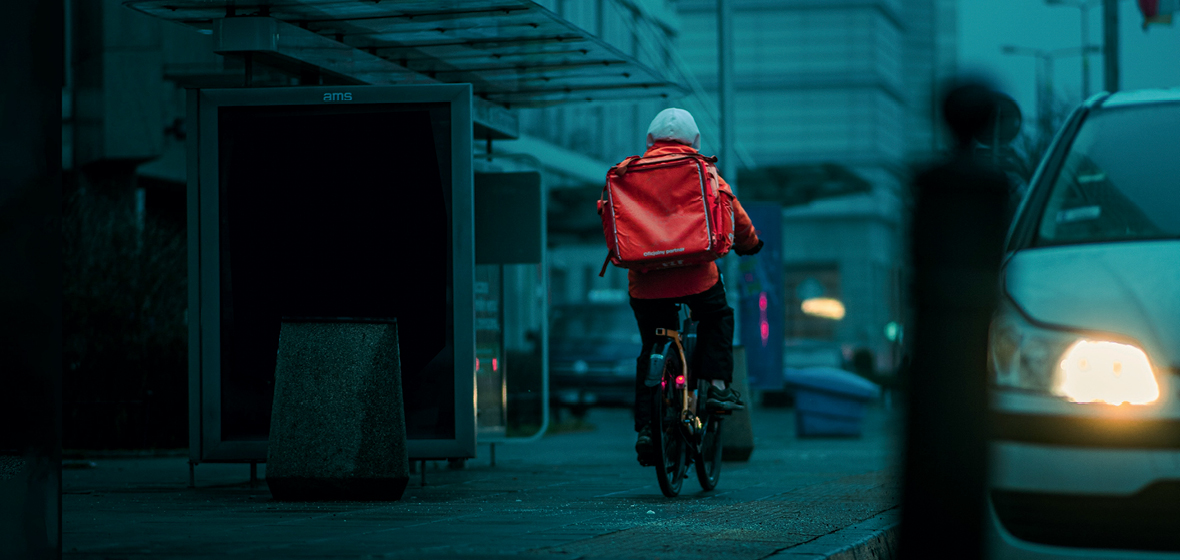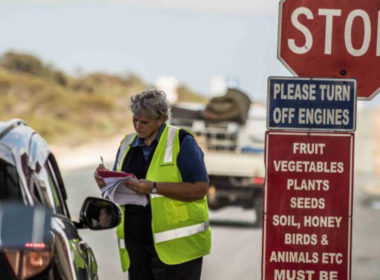It’s glamourised as gig work, but it really is piecework with an app.
At least five food delivery riders have died on Australian roads since September. Who should take the fall for such risky working conditions and a dearth of employment rights?
They have been hailed alternatively as “front-line heroes” and “the 21st century’s chimney sweeps”. Taking on dangerous work for meagre pay: food delivery riders are at the centre of an escalating legal debate over the classification and rights of employees versus independent contractors in Australia.
The riders – those omnipresent cyclists wheeling insulated cubes on their backs for app-based companies like Deliveroo, Uber Eats, Menulog and Hungry Panda – have been spinning on NSW roads since 2014. They surged in numbers during COVID-19 lockdowns before making darker headlines late last year, when reports emerged that five riders had been killed on NSW roads in just two months.
Or, as Naaman Zhou writing for The Guardian put it succinctly: one food delivery rider died in Australia every 11 days between September and November.
“The deaths represent the total failure of a system which never should have been allowed to thrive,” National Secretary of the Transport Workers Union (TWU) Michael Kaine wrote in an opinion piece published in November.
Contractor or cop out?
Companies coordinating the deliveries have mostly washed their hands of the bloodshed by pointing to the agreements their riders sign up to as “self-employed” contractors. The companies say they offer riders freedom to choose when and where they work by logging into an app and accepting or rejecting deliveries as they come up nearby.
 Josh Bornstein, Employment lawyer and partner, Maurice Blackburn
Josh Bornstein, Employment lawyer and partner, Maurice Blackburn
“Deliveroo riders repeatedly tell us that, above all else, they want to set their own work patterns and decide when, where and whether to work. This degree of flexibility is only compatible with self-employment, so riders can fit this work around their other commitments such as study or caring responsibilities,” a spokesperson for Deliveroo told LSJ.
The flip side of that flexibility, however, is that it enables the employers to negate responsibilities like ensuring safety, minimum wages, paid sick leave and compensation for injury at work.
Josh Bornstein, employment lawyer and partner at national firm Maurice Blackburn, told LSJ the business model “subverts minimum labour standards”.
“It’s glamourised as gig work, but it really is piecework with an app,” Bornstein said. “It undermines basic labour standards by classifying people as independent, self-employed businesspeople – when they have none of the hallmarks of being an entrepreneur, or self-employed businessperson. It’s highly exploitative.”
Deliveroo and UberEats provide riders with free personal injury and income protection insurance when logged into the app, but the nature of gig economy work is that riders take jobs where and when suits them – so are not necessarily always protected.
It’s also unclear whether riders should have access to unfair dismissal laws when they are booted off platforms for missing delivery deadlines; or for raising public concerns about pay, as happened to Melbourne delivery rider Josh Klooger in 2018.
The TWU took Klooger’s unfair dismissal case to the Fair Work Commission, who ruled Foodora had misclassified casual workers as independent contractors and owed more than $8m in wages, superannuation and tax. The company has since left Australia. However, subsequent test cases have been settled out of court, or even been decided in the opposite – such as in 2019 when the Commission decided UberEats drivers were not employees.
Meanwhile, in the UK, the Supreme Court in March handed down a landmark ruling that Uber taxi drivers (not food delivery riders, but who operate in the app-based gig economy) should be classed as employees and were owed a minimum hourly wage, holiday pay and pensions.
“The law really is unsatisfactory to uncertain,” Bornstein said. “As a result, there have been lots of test cases and courts have gone in different directions, different judgments, throughout my whole career.
“Many of these riders are vulnerable in the labour market, and the consequences of losing income are in some ways more severe than for others: many are international students on visas and aren’t aware of their rights. When they hear that they might lose their visa, they don’t want to take their fight to court.”
An old problem with a new look
Kaine told LSJ the fight for transport workers to enjoy basic employment rights was an ancient battle that unions have been waging since pre-automobile times – over pay for horse-drawn carts transporting farmer’s produce to market.
The Industrial Revolution raised the stakes as trucks became the preferred delivery method – but this also heightened the risk for drivers trying to maximise their number of deliveries and pay.
As UNSW researcher Michael Quinlan wrote, “Australian studies [on truck driving] have found a significant link between scheduling pressures, unpaid waiting time, insecure rewards and access to work, and hazardous practices such as speeding, excessive hours and drug use by drivers”. A 2001 study commissioned by the Australian Department of Infrastructure, Transport, Regional Development and Communications found drivers being paid per trip drove on average 15km per hour faster than those on fixed rate payments like hourly wages.
Modern truck drivers have since been provided minimum pay standards, sick leave, insurance, and other rights by most employer companies. But gig economy riders are still being left out in the cold. A study by the TWU in 2020 found delivery riders earned an average $10 per hour after costs.
“We’ve got decades of evidence about trucking in Australia that shows a proven relationship between the amount that drivers pay and the risk of truck crashes,” Kaine told LSJ.
“In the gig economy, for delivery riders, you get the worst of both worlds: the pay is low, and it’s piecework. When you put those two things together, you have a situation where riders have to work longer or faster to earn a meaningful income. So, you’re on a bike, interfacing with traffic and general road users, and you’ve got the capacity to whip in between lanes or you think, ‘it’s a red light but I’m on a bike and if I don’t make this delivery, I’ll be kicked off the app’. “People are going to die. And they are.”
What needs to change?
The NSW Government in November 2020 commissioned a joint taskforce led by SafeWork NSW and Transport for NSW to explore the spate of deaths of food delivery riders and identify safety improvements for the industry. In December, it developed draft guidelines for rider safety: recommending food delivery platforms ensure their riders be trained in Australian road rules and recognising fatigue warning signs, as well as provided with safety equipment such as bike lights, insulated delivery bags and reflective vests. The recommendations made no mention of minimum pay, sick leave, or insurance policies.
Bornstein would like to see legislative change to protect delivery riders under the existing National Employment Standards. However, Kaine said this could be too restrictive. He told LSJ the TWU is urging the government to appoint a standing body empowered to assess employment rights and classification on a case-by-case basis. It would look similar to the former Road Safety Remuneration Tribunal that existed between 2012-2016 to oversee the road transport industry.
“It would be able to assign rights, obligations and protections under employment law standards as necessary, and attuned to the level of dependency that workers have on their employers,” Kaine said. “That would be logical on a practical basis, and on a legal basis, and on a social justice basis. It’s very powerful approach.”




